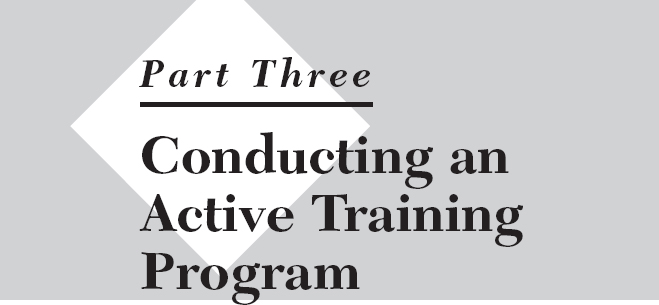
An Internet search on best practices for trainers might include the following responses:
- Involve participants in an activity in the first five minutes.
- Frequently check for understanding.
- Be prepared to modify plans based on participant feedback and technical difficulties.
- Use self-disclosure and humor to develop an open climate.
- Listen carefully and match what's happening to the needs of the participants.
- Use a wide variety of learning methods.
- Give participants the “what-why-how” for every training activity.
- Review where the group has been, give an overview of where it's going, and summarize periodically along the way.
Yes, you can build active learning into the design of your program, but it is in the delivery of that program that your efforts are truly tested. As we have already stressed, designing is not complete at the time of delivery. Instead, the delivery phase of a training program is a period of continually adjusting, refining, and redesigning.
Ensuring the successful delivery of a training program is a process that actually begins before the participants arrive. Preparation is one of the most important ingredients for success. Since much will happen during the actual program, you need to make sure that materials and equipment are ready and that the physical layout of the training room is suitable. As the trainer of this event, you need to be mentally prepared as well. ...
Get Active Training: A Handbook of Techniques, Designs, Case Examples, and Tips, 4th Edition now with the O’Reilly learning platform.
O’Reilly members experience books, live events, courses curated by job role, and more from O’Reilly and nearly 200 top publishers.

